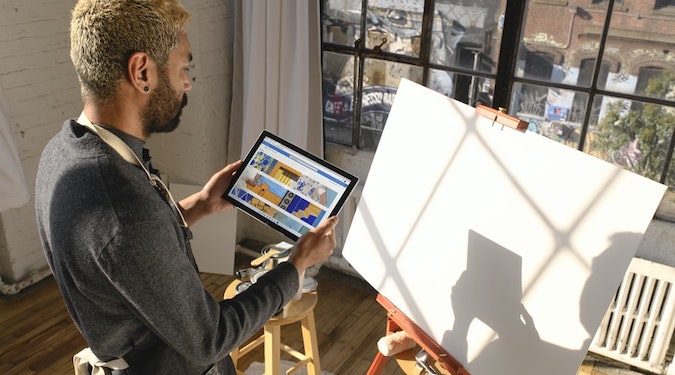Unpacking the future of the creator economy
Share

From staying in touch with friends on Myspace, to launching global empires on TikTok, YouTube and Instagram, our relationship with social media has seen a huge transformation in recent years, with the rise of the “creator” at the forefront. Michael Stocks looks at the future of the creator economy.
Over the last two years in particular, we’ve seen digital interactions become increasingly central to our daily lives, propelling the global creator economy to new heights. As a growing number of people turned to their screens to connect and stay entertained, countless others found new ways to build their audience and monetise their passions. In that time, we’ve seen the number of creators on Linktree grow from four million to 20 million. The creator economy collectively saw more venture investment in the first six months of 2021 than in the last five years combined.
As we move into 2022, it’s clear that we’ve only seen the tip of the iceberg when it comes to the creator economy. Increasingly fragmented audiences and the continued proliferation of platforms will make it harder than ever for both brands and creators to get noticed, raising one central question: how can brands and marketers capitalise on the rise of the creator economy?
First things first — unpacking the Australian creator economy
Linktree defines the creator economy as a broad industry of individual creators who use influence, creativity and skills to aggregate and monetise an online audience. This is paired with the suite of platforms, marketplaces and tools that empower them.
This nascent sector is huge—worth over $100 billion globally with a record $1.3 billion secured in VC funding in 2021. Linktree saw the creative vertical grow by six times in Australia from 2020 to 2021. This was alongside skyrocketing growth of seven times in the influencer vertical in the same period. This has proved that more people are using social media than ever before to take their passions to the next level.
From digital billboards to DTC businesses
A key trend in the evolution of the “creator” relates to the changing means of monetisation. Today’s creators no longer act as a ‘digital billboard’ for brands. Instead they are becoming fully-fledged direct-to-consumer businesses in their own right. Creator monetisation has historically been based around ad-revenue-sharing and brand sponsorships. However, there is a rise of creator-focused funds and subscription-based platforms like Substack, Patreon and Gumroad. This means it is now increasingly possible to build a viable business from a small number of dedicated fans. Platforms like Linktree, combined with the rise of NFTs, are enabling a new paradigm of economic empowerment. It is helping creators to launch new revenue streams in just a few clicks.
All of this means that creators are paving the way for a new kind of entrepreneur. One that is driven by content, commerce and a new form of networked connectivity. To leverage this changing dynamic in the coming years, brands will need to reimagine how they work with creators. It will be a collaborative process that recognises the value of cross-platform audiences, content and campaigns.
Quality over quantity when it comes to audience
Alongside this democratisation of monetisation tools, perceptions of audience value are also changing. Partnerships were once concentrated around creators with the highest following. Now there is n increasingly-oversaturated social media ecosystem. This has led to a rise in the importance of smaller creators each with their own niche audiences.
Atelier Ventures’ Li Jin proposes that a highly engaged audience of 100 true fans can be more valuable than a passive mass audience. This marks a value shift away from eyeballs and attention to engagement and authenticity. The brands that will succeed in the coming year will be those that embrace this change; choosing to cultivate community-oriented relationships with creators that transcend the transaction and instead genuinely add value.
Looking ahead
Looking back to the birth of social media in 1997, no one could have predicted this evolution of the “creator”. No one would know the impact it would have. Not only in regards to the types of content we consume, but also the opportunities it would open up for creative pursuits. Linktree is preparing for a future where anyone, anywhere can make a living doing what they love online. Your brand should be ready for this new reality too.
Michael Stocks is the head of strategy and operations at Linktree.















